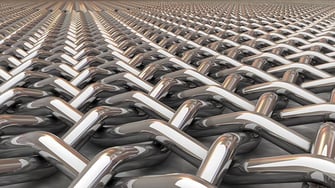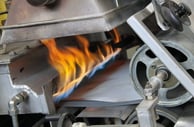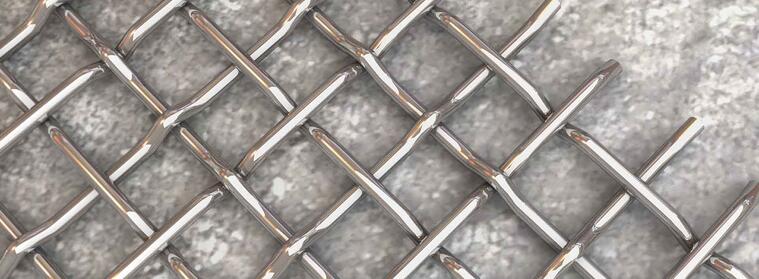304 vs 316 Stainless Steel Wire Mesh: Which Alloy Should I Use?
Stainless steel wire mesh is a versatile material that delivers durability that countless industries rely on. Stainless steel in itself has dozens of classifications and specifications that can sometimes make it hard for lab technicians and floor engineers to pinpoint the best solution.
Of all the stainless steel classifications, type 304 and type 316 stand as the most popular. So what’s the difference?
W.S. Tyler has worked with woven wire mesh of various alloys for over 140 years and is here to ensure you apply the right one to your operation.
In this article, we establish what stainless steel is, what low carbon alloy is, how 304 and 316 stainless steel mesh compare, and which alloy you should use.
 What Is Stainless Steel Alloy?
What Is Stainless Steel Alloy?
Stainless steel has become one of the most widely used materials throughout the world. There are centuries of research standing behind its manufacturing processes.
Now, no matter which type of steel you are working with, it is most likely classified by the quality of the alloy. That said, a stainless steel alloy must consist of a certain level of carbon and chromium to be considered stainless.
To put this into perspective, this article will compare 304 stainless steel to 316 stainless steel.
Low Carbon Alloy Steel
As stated above, most steel classifications are dictated by the level of carbon that they contain. When an alloy contains less than .03% carbon, it then carries the classification of a low carbon steel, or L-grade.
Having such a limited amount of carbon in the alloy reduces the amount of carbide precipitation. This heightens the alloy’s resistance to corrosion.
This is particularly beneficial for applications in which the stainless steel wire mesh is exposed to moisture. In other words, the more carbon that is present in the alloy, the more likely it is to rust and corrode when water is present.
How Do 304 and 316 Stainless Steel Compare?
The main differences between 304 and 316 stainless steel mesh come down to their corrosion resistance, durability, heat resistance, and formability.
Now, 304 stainless steel mesh is an alloy that contains 18% chromium and 8% nickel. On the other hand, 316 stainless steel mesh is an alloy that contains 16% chromium, 10% nickel, and 2% molybdenum.
Because 316 has more nickel and contains molybdenum, it is higher quality than 304. These added benefits allow it to be more resistant to corrosive environments, more stable and durable, and more resistant to extreme temperatures.
That said, there are little to no differences between the two alloys visually. They also carry the same ability to be welded and customized during fabrication.
When it comes to cost, 316 stainless steel wire mesh stands as the most expensive of the two. But these margins are not that significant.
To put this into perspective, if a piece of 304 stainless steel mesh costs $1.00 per square foot then 316 stainless steel mesh would cost somewhere around $1.15 per square foot.
This remains the same regardless if you are using 304/316 regular or L-grade 304/316.
Which Alloy Should I Use?
The alloy that should be used depends on the application. If the mesh is going to be subjected to harsh conditions that introduce corrosive substances, 316 should be applied.
This is because the molybdenum that is added to 316 stainless steel wire mesh, allows it to withstand more corrosive applications.

With that, if you are simply using it to sift non-corrosive materials, such as food particles or aggregates, then a 304 stainless steel mesh will get the job done.
Low carbon steel, whether its 304 or 316, should be applied when welding is needed during fabrication. This is because carbon naturally absorbs heat and may hinder any sort of welding or heat treating process.
So, the higher the carbon content of the alloy the harder it is to be fabricated.
An Effective Operation Starts With Selecting The Right Alloy
The durability of stainless steel wire mesh has made it one of the most versatile materials available. 304 and 316 stainless steel may be the most widely used of the dozens of stainless steel specifications.
As with all alloys, 304 and 316 stainless steel mesh are classified by the quality of the steel as well as the amount of carbon and chromium it contains. That said, the alloy you choose is only one of the many specifications that go into selecting the right woven wire mesh.
If welding is required, stainless steel that contains less than .03% carbon is ideal.
Having worked with woven wire mesh for over 140 years, W.S. Tyler has the expertise needed to guide towards the perfect mesh specifications.
For more information about which mesh specifications work best for you, refer to our article: How to Pick the Right Woven Wire Mesh (Mesh Count, Wire Diameter, and Micron Rating).
About Ronnie Brown
Ronnie is the Content Writer for W.S. Tyler and has four years of experience as a professional writer. He strives to expand his knowledge on all things particle analysis and woven wire mesh to leverage his exceptional writing and graphic design skills, creating a one-of-a-kind experience for customers.




